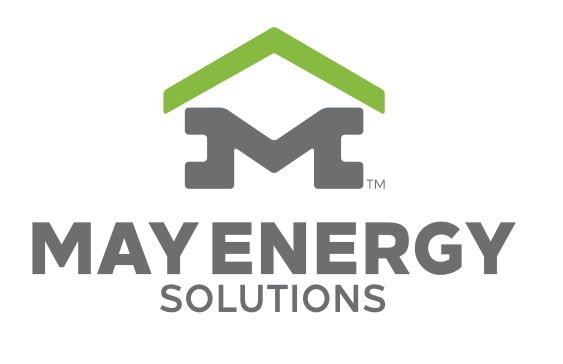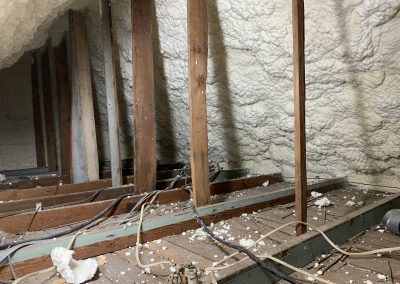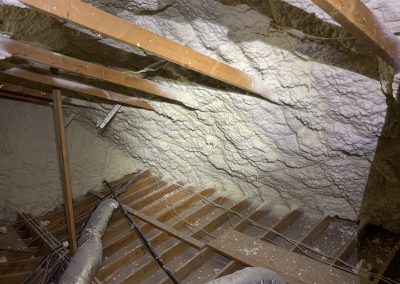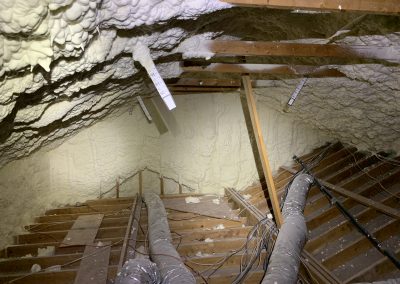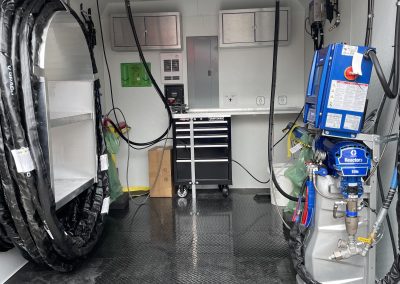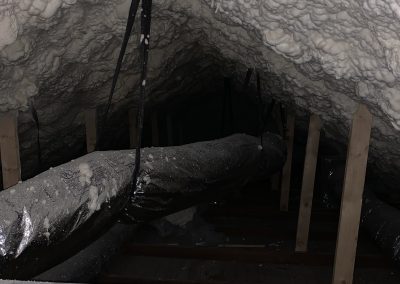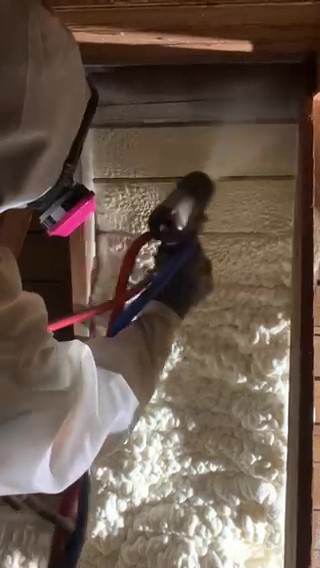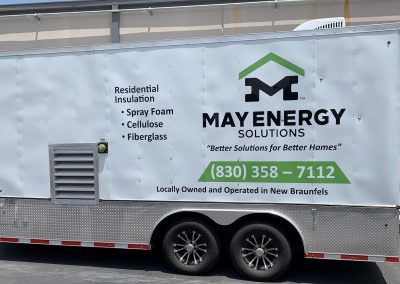Spray Foam Insulation
Spray foam is a relatively new type of insulation where two components are sprayed together, and a chemical reaction takes place, and plastic foam insulation is formed inside the wall or on the roof deck between the roof rafters. Spray foam’s advantages are higher insulation values, the insulation fills the space being insulated and completely surrounds wiring or plumbing, so there are no gaps to affect performance. Since most homes in Texas have the HVAC system and ducts in the attic, spray foam offers several other advantages. It puts the system and the ducts inside the insulation envelope, so instead of operating in a 120-degree attic in the summer, with spray foam on the roof deck, they are operating in an attic that is typically 80 degrees. This helps the system perform more efficiently and prolongs the life of the system. However, due to the volatile gases released during curing, only trained and professional spray foam insulation installers should apply it. Typically, the home must not be occupied for 24 hours after application to allow for curing of the foam and ventilation of the home.
For new construction, spray foam is a great option to achieve peak energy efficiency. However, to achieve its full potential, spray foam must be combined with other good building practices such as efficient doors and windows, sealing the bottom plate and other penetrations that the foam does not seal, and an HVAC system sized and installed to properly work with the spray foamed home.
Spray foam is potentially an excellent option for upgrading the insulation in an existing home. In leaky, poorly insulated older homes, spray foam insulation can save up to 40% on heating and cooling costs. The existing HVAC system must be evaluated by a knowledgeable HVAC contractor to ensure it will work properly with a spray foamed attic and provide proper dehumidification of the attic as well as the living space.
Invest in maximum home comfort and energy savings with the leading spray foam insulation company; contact us today to request a free inspection!
Our Process of Spray Foam Insulation
We are spray foam insulation contractors in New Braunfels with expertise in attic retrofits – helping homeowners who have purchased existing homes and are remodeling and upgrading them to modernize the design and add comfort and value to their property. For this, our process is as follows:
Removing Existing Insulation
Before installation, our team of spray foam installers remove the existing batt or blown-in attic insulation. This takes 4–6 hours, depending on the attic size and condition.
Prepping the Home and Attic
The next day, while the spray foam rig is warming up, the home and attic are prepped for spraying. If the attic access is in the house, plastic sheeting and blankets are used to protect the living area from damage from the spray equipment and to make clean-up easier at the end of spraying.
Sealing and Venting the Attic
Prep inside the attic can include protecting items such as air handlers, lights, and other equipment from the spray foam, and sealing up any existing exhaust vents since spray foam attics are usually intended to be unvented. Ventilation fans are set up to provide fresh air into the attic and to exhaust the fumes from the curing foam to the outside.
Spraying the Foam and Clean Up
The actual spraying process typically takes 4 to 6 hours, again depending on the size of the attic. After spraying, the spray equipment is removed, the protected equipment in the attic is unmasked, the other protective materials are removed, and everything is cleaned up under the supervision of our attic spray foam insulation contractors.
Curing and Ventilation
The exhaust fan remains in place, and the house must remain unoccupied for 24 hours after spray foam insulators are done with installation to allow time for the foam to cure and the volatile gasses from curing to be exhausted from the home. And there you go!
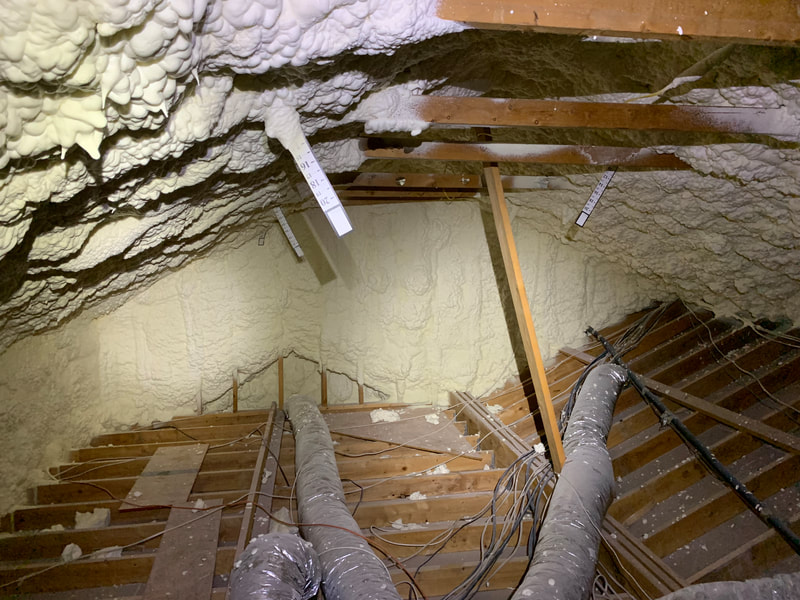
Why Choose Spray Foam Insulation for Your Property?
Residential spray foam insulation is the most energy-efficient choice available. The foam expands to fill the area to be insulated, effectively sealing all the gaps in the framing against air leakage and moisture intrusion. It also has a relatively high R-value per inch, so the thermal insulating qualities combined with the sealing capabilities outperform other traditional types of insulation. Since the walls and the roof deck form the thermal envelope of a spray-foamed house, the attic’s HVAC equipment operates more efficiently and effectively than in a traditionally insulated home. If you search online for spray insulation companies near me, you will find that May Energy Solutions is a local, New Braunfels based business with outstanding reviews, and we’re happy to provide free estimates.
